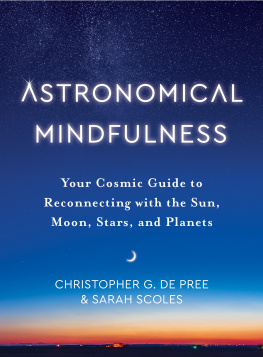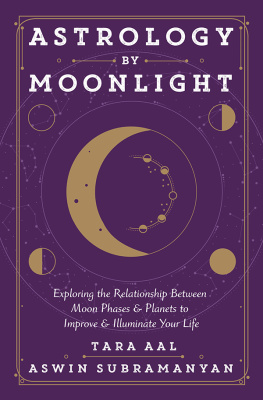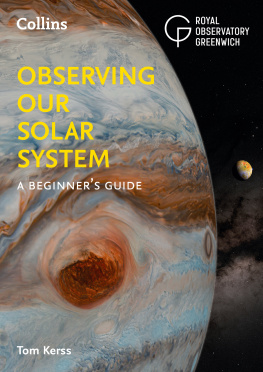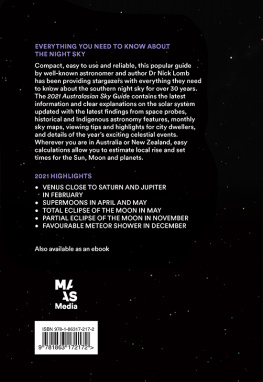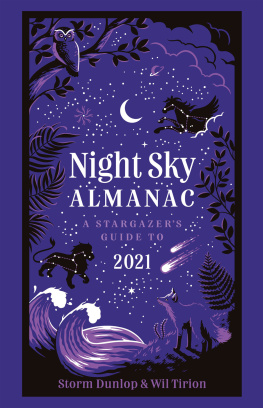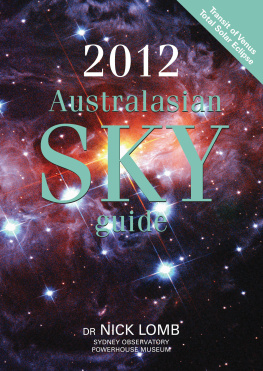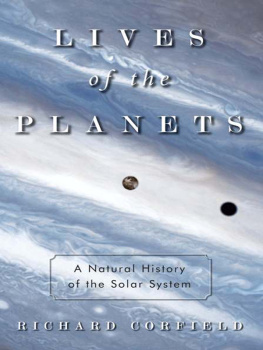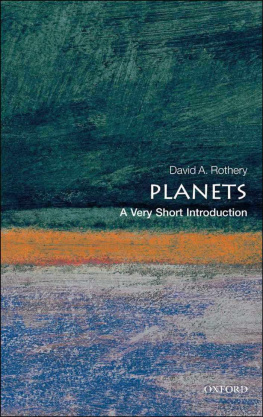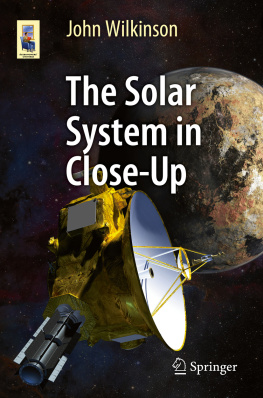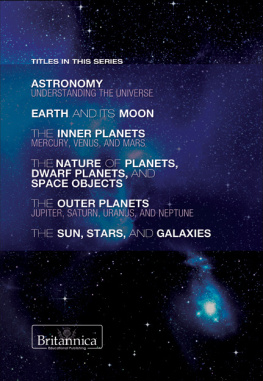Introduction
About the Author
Ive had an interest in astronomy since I was six and although my interest has waxed and waned like the Moon, Ive always felt compelled to stop and stare at the stars.
In the late 90s, I discovered the booming frontier of the internet, and like a settler in the Midwest, I quickly staked my claim on it. I started to build a (now-defunct) website called StarLore. It was designed to be an online resource for amateur astronomers who wanted to know more about the constellations - and all the stars and deep sky objects to be found within them. It was quite an undertaking.
After the website was featured in the February 2001 edition of Sky & Telescope magazine, I began reviewing astronomical websites and software for their rival, Astronomy . This was something of a dream come true; Id been reading the magazine since I was a kid and now my name was regularly appearing in it.
Unfortunately, a financial downturn forced my monthly column to be cut after a few years but Ill always be grateful for the chance to write for the worlds best-selling astronomy magazine.
I emigrated from England to the United States in 2004 and spent three years under relatively clear, dark skies in Oklahoma. I then relocated to Kentucky in 2008 and then California in 2013. I now live in the suburbs of Los Angeles; not the most ideal location for astronomy, but there are still a number of naked eye events that are easily visible on any given night.
Why I Wrote This Book
One of the reasons why I created the StarLore website was because I couldnt find what I wanted online. Essentially, I created it for me. The fact that others liked it too and found it useful was a plus.
In essence, this is also why I wrote this book. I couldnt find anything similar on Amazon. I just wanted a quick reference guide to night sky events in 2015. I wanted to know when the Moon and planets would appear close to one another. I wanted to know when to observe Jupiter and Saturn. I wanted to know which meteor showers were ongoing and which constellations, bright stars and deep sky objects would be visible.
I wanted to know what was going on in the sky on any given night. I wanted to know what I could see. Even from Los Angeles.
Sometimes, if you want something done, youve just got to do it yourself.
Who This Book Is For
Not just me, but you. If youre reading this, then its because you want to know too. If you already have an interest in astronomy, if you want to know when Jupiter reaches opposition or when Mercury is at greatest eastern elongation, then this book is for you.
Do you need to be an expert astronomer? Do you need to know all the technical terms? No, but truthfully, it helps if you know at least a little. Youre not going to see everything if you dont know your Canis Major from your Canis Minor, but the good news is that you dont need to know it all.
You only need to know when and where to look for the good stuff. The stuff that doesnt need binoculars or a telescope. The stuff you can see with just your eyes, even from the light-polluted smoggy skies of Los Angeles.
I wrote this book with an emphasis on just those things the Moon, the visible planets (Mercury, Venus, Mars, Jupiter and Saturn) with some bright stars and constellations thrown in for good measure.
Ill tell you whats visible in the evening and in the hours before the dawn. For the more experienced astronomers, Ill tell you whats not visible too. All you need is a little curiosity and a desire to explore the night sky. My hope is that youll develop your interest further and learn more about all the other stuff too: the other constellations, the fainter stars, the star clusters, the nebulae and the galaxies. Theres a whole universe of stuff just waiting for you to look up and notice it.
How to Use This Book
First of all, theres a glossary of technical mumbo-jumbo. I would love to say you dont have to read it but I highly recommend you become familiar with the terms, perhaps as you encounter them throughout the book. It will help to reduce any potential confusion and, hopefully, it wont take too long to build some familiarity.
Having said that, I feel you dont have to know a planets magnitude or apparent diameter to be able to see it shining next to the Moon. And there are a lot of events that require nothing more than just your eyes to appreciate them.
The book then details each individual month. For each month, Ive written a summary of whats visible. So if you just want to know if February is a good time to look at Jupiter (it is) then you can read about it at the beginning of that month.
The text is designed to be short and to the point because I wanted to provide the necessary information quickly. I didnt want anyone (least of all me) to read a paragraph to learn that Mercury isnt visible that month.
Youll then find notes on whats happening and whats visible on each of the key dates in that month. Again, the text is designed to be short and to the point and aims to provide the most relevant information in the least amount of time.
Heres an example:
January 11 th
01:00 UT - Conjunction of Mercury and Venus. Separation: 38.5'. (Mercury: illumination 71%, magnitude -0.7, diameter 6.2. Venus: 95% illuminated, magnitude -3.9, diameter 10.5. Naked eye, Capricornus, evening sky. See image above.)
Look for descriptions in blue text this indicates something interesting that you can easily see with the naked eye on that date.
All the times are given in Universal Time (UT.) This is the standard time zone used in the astronomical community to avoid having to list the time for every time zone in the world. Universal Time is the same as Greenwich Mean Time (i.e., the time in the United Kingdom) so if you know how far ahead or behind your location is, youll be able to convert it to local time.
Confused? Dont be, because the text will tell you if its visible in the pre-dawn or evening sky. It may not be visible at all at that exact moment, but many events can still be observed either before or after the actual time of the event itself. (See the for more information, including converting to North American time zones.)
Next is a description of the event itself; in the example above, a conjunction is when two objects appear close to one another, so a conjunction of Mercury and Venus means the two planets are next to one another in the sky. There then follows some technical information for the more advanced astronomers (again, see the ) but if youre new, you dont have to worry too much about that.
If the event is easily visible to the naked eye, then itll say so. Itll tell you which constellation the event occurs in (Capricornus in this example) and whether to look in the evening or pre-dawn sky (evening sky.)
For some events, theres also an image that will simulate what it should look like. For these images, I am indebted to the excellent Android app, Mobile Observatory, and its author, Wolfgang Zima. Ive been using this app for a couple of years now and its proven to be a superb resource for astronomical events and night sky simulations. Ive always found that the best software is written by the individuals who have a passion for astronomy and Mobile Observatory is a shining example of this.
(If you dont own an Android device, you might want to also try Stellarium . This free software also provides an excellent simulation of the night sky.)
The images in the book use the city of New York as a basis; I chose New York because its the nearest large city thats approximately midway between London and the American west coast. The depiction should be fairly accurate for most of the United States with some variance for Canada and the United Kingdom. (I have to cater to my largest potential audience base and there are far too many locations to provide graphics for them all.)


